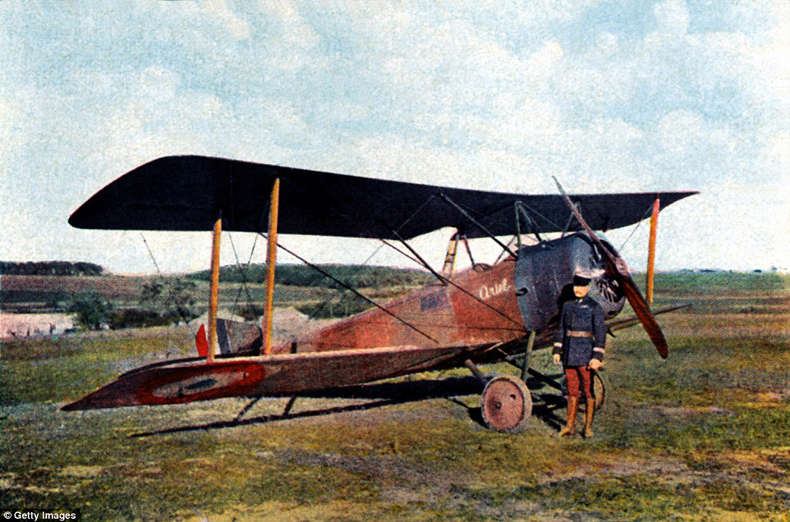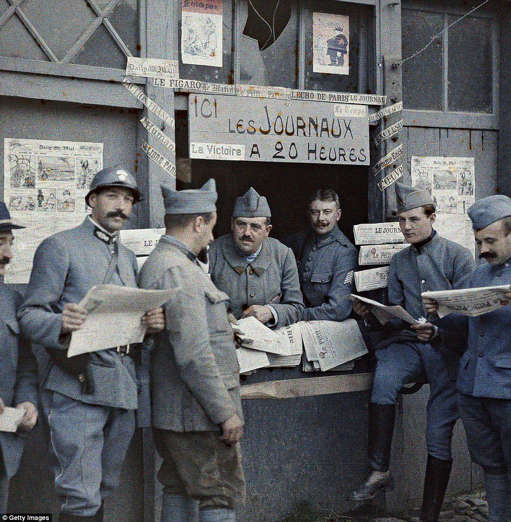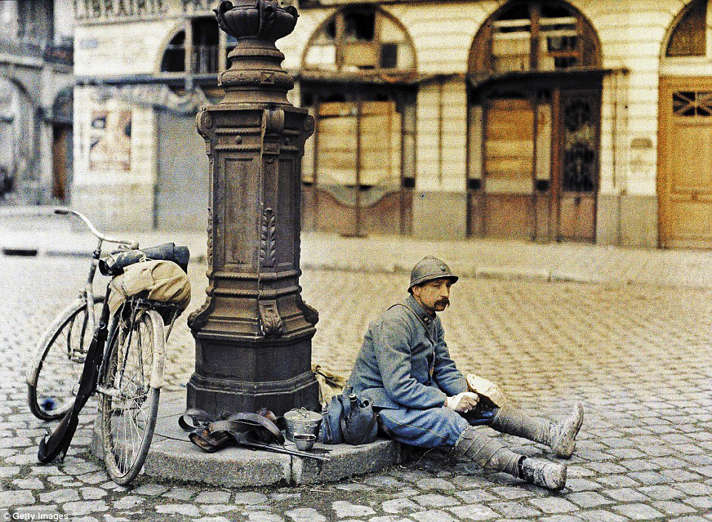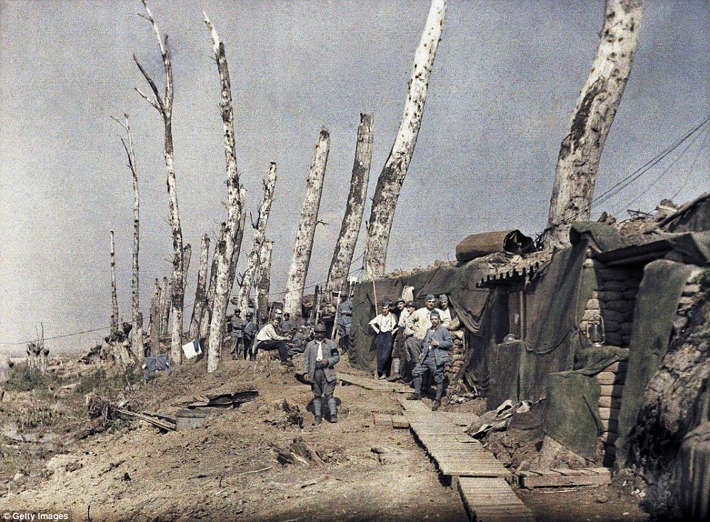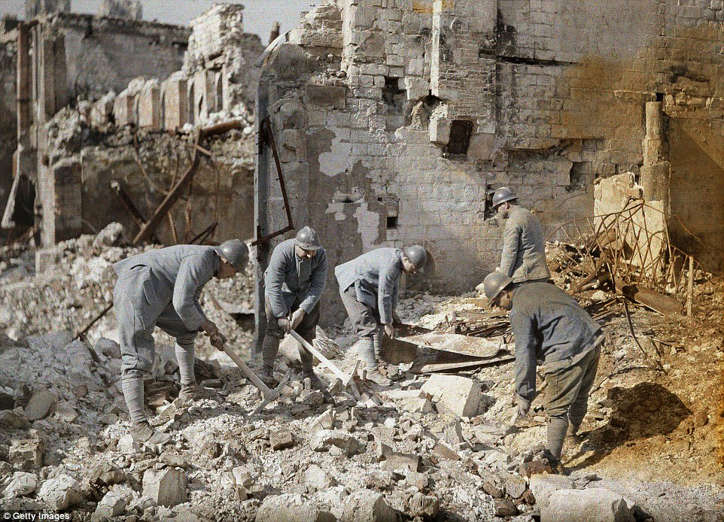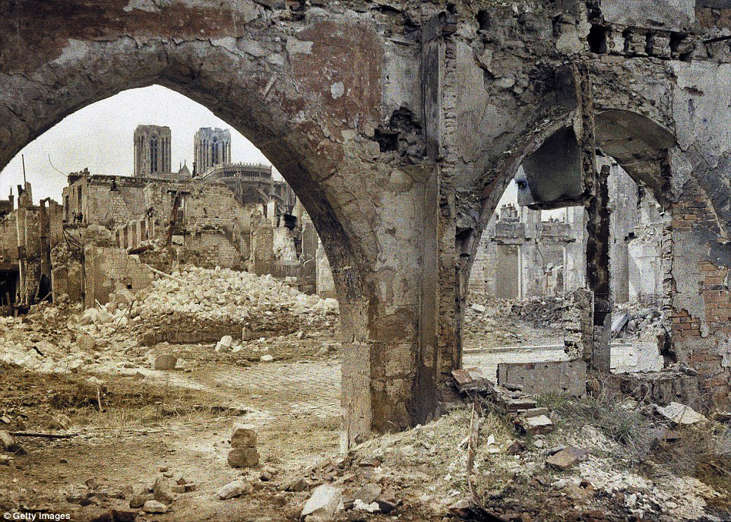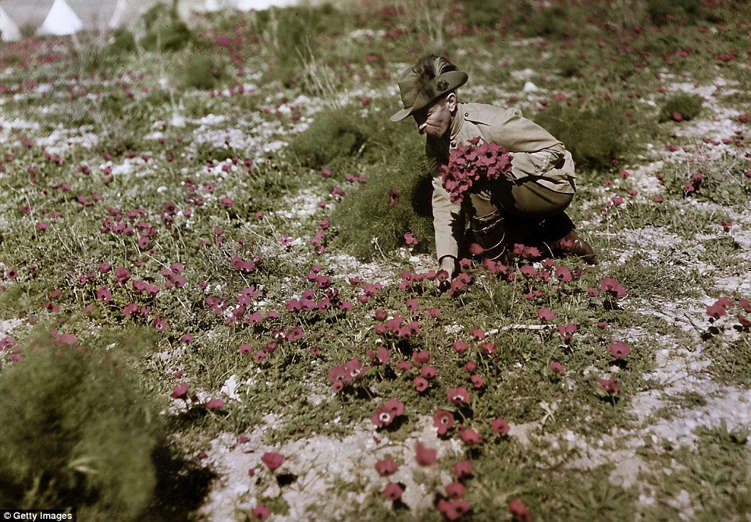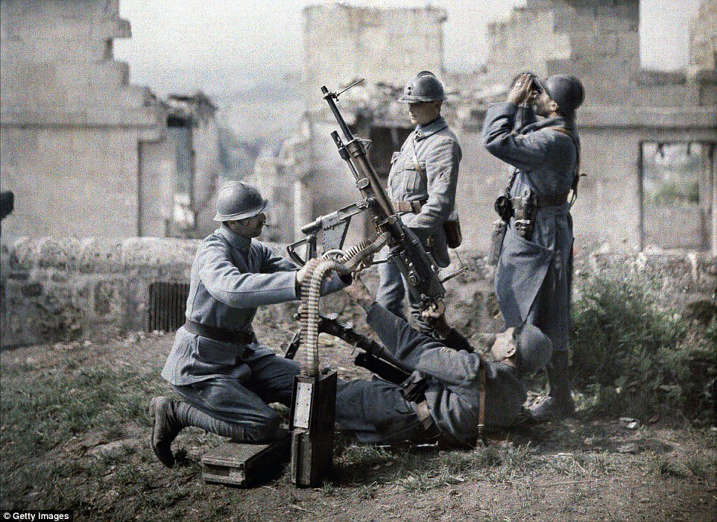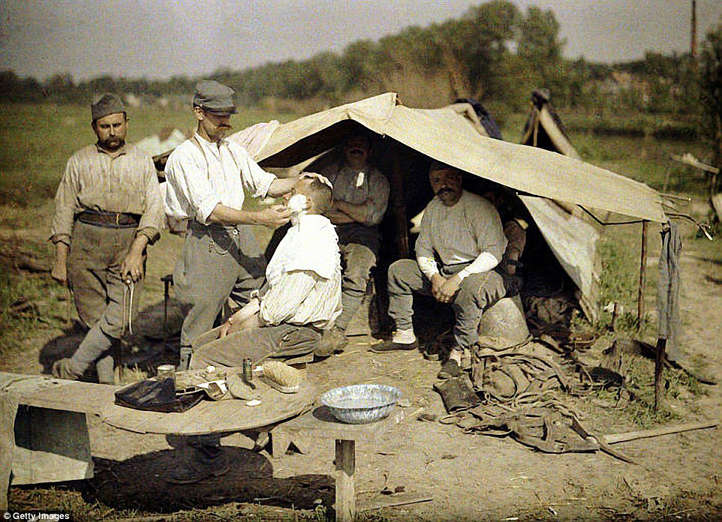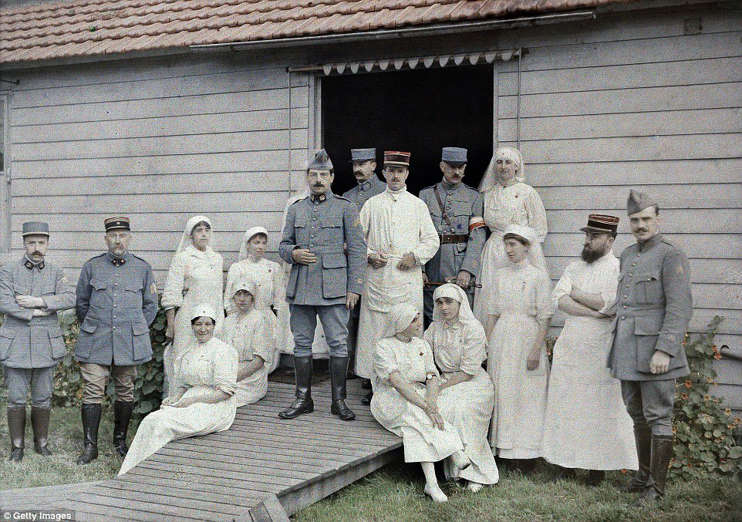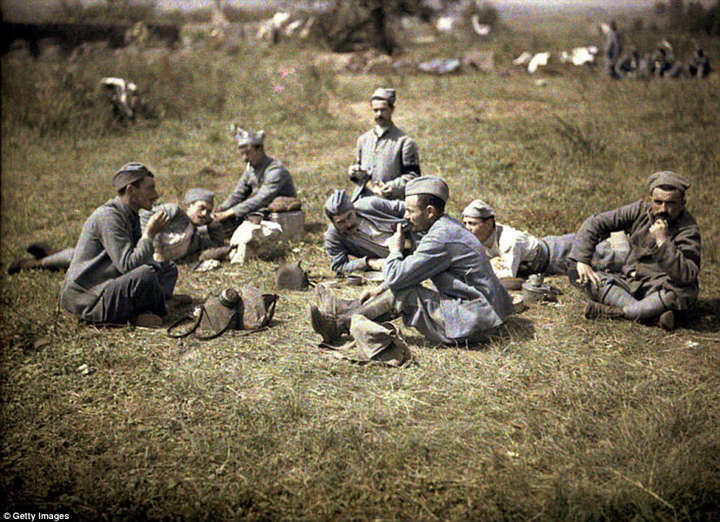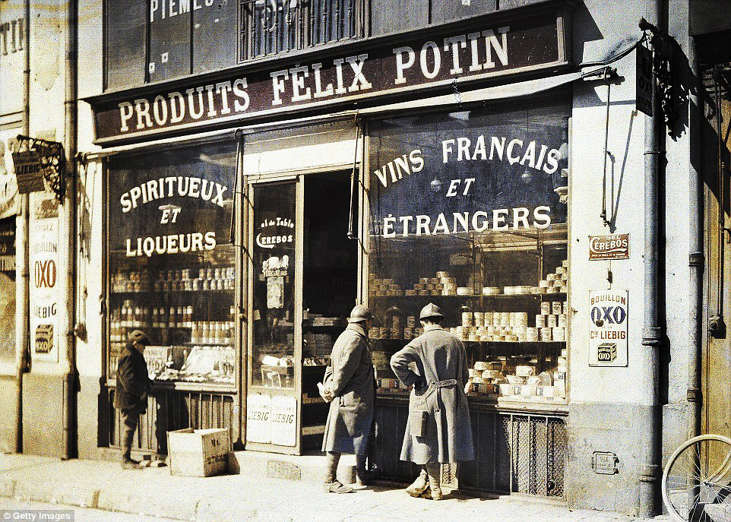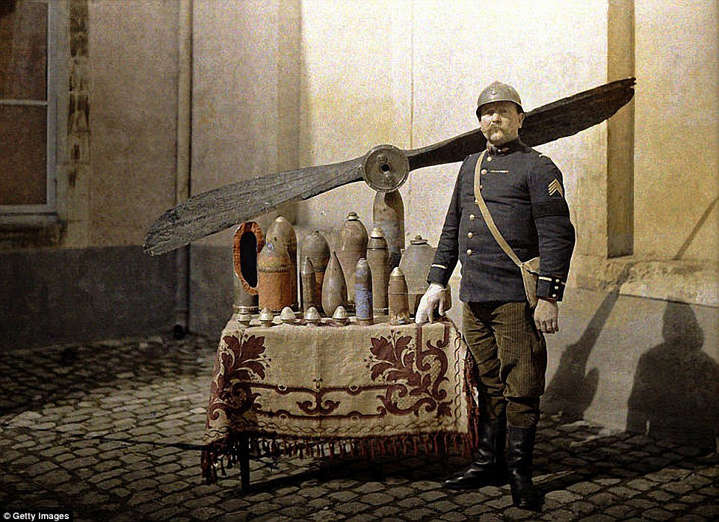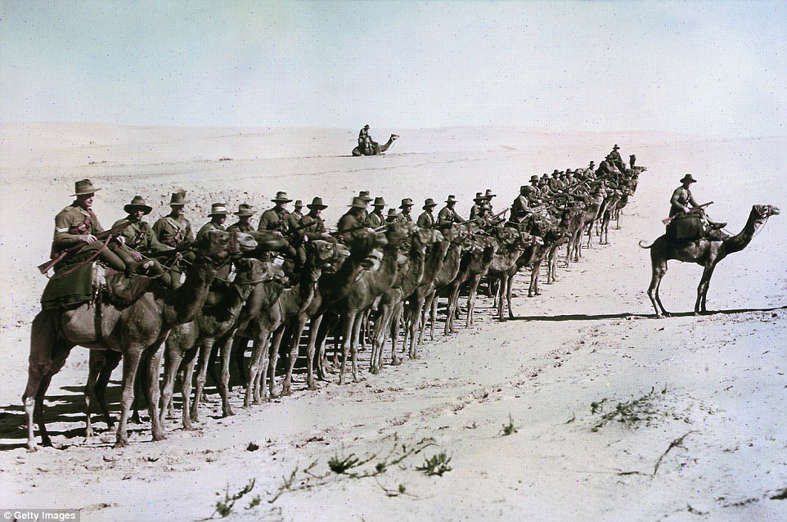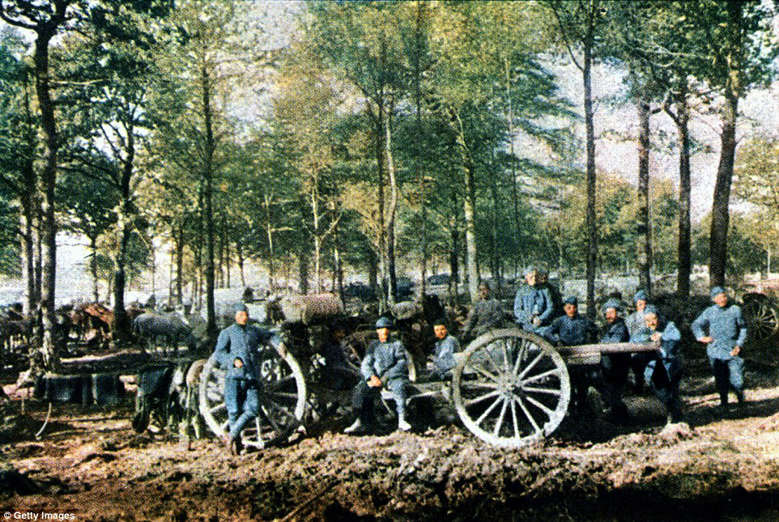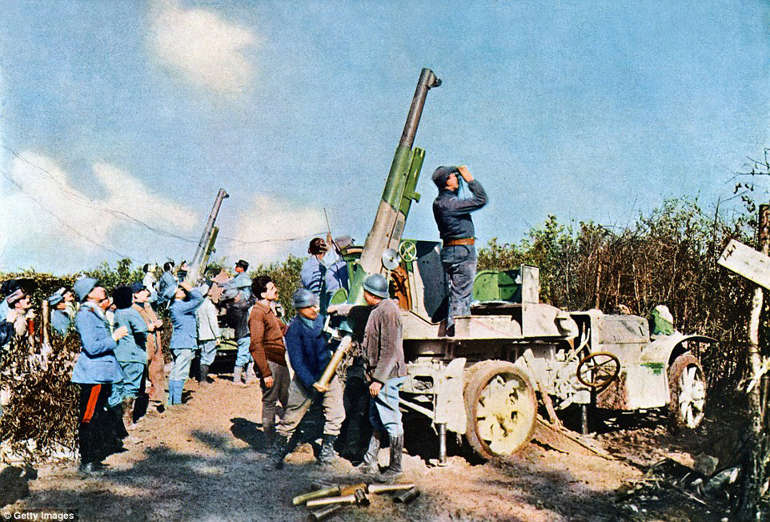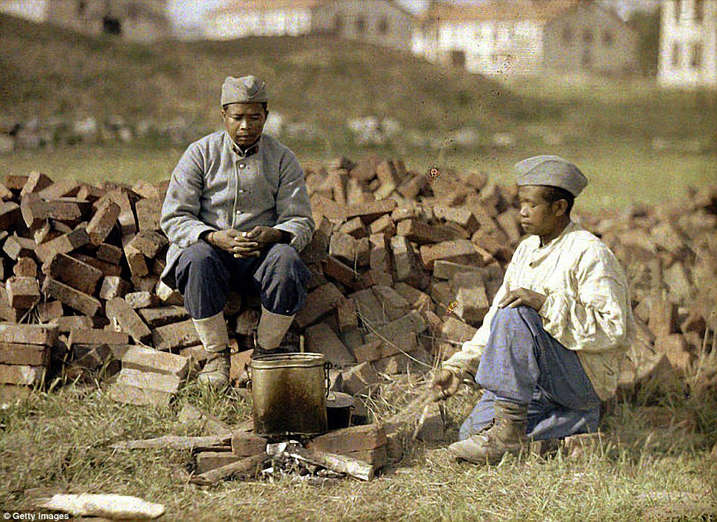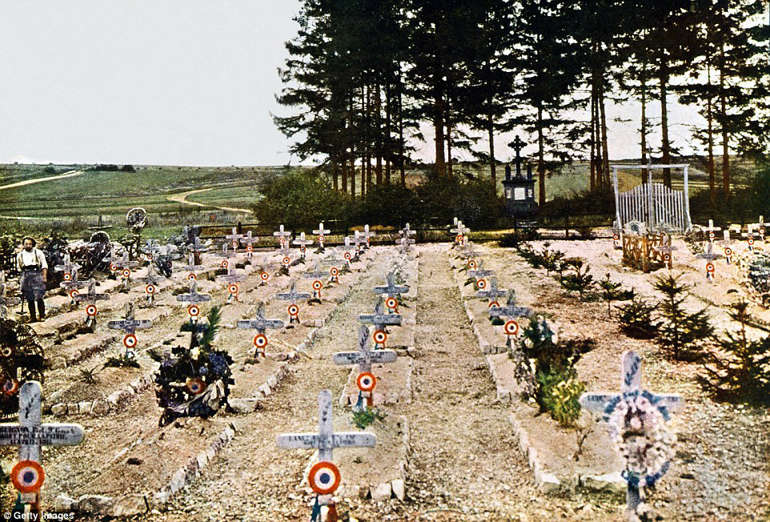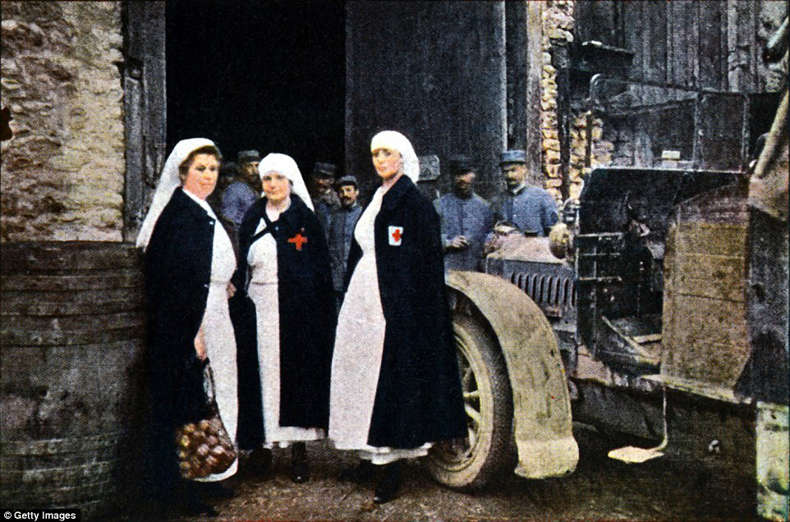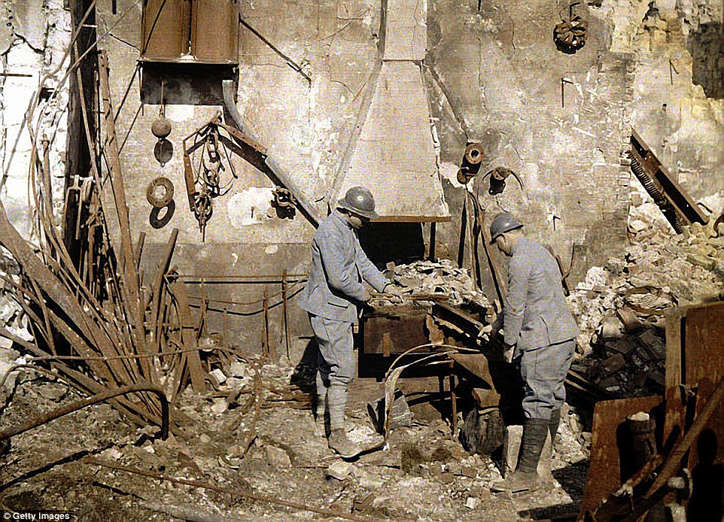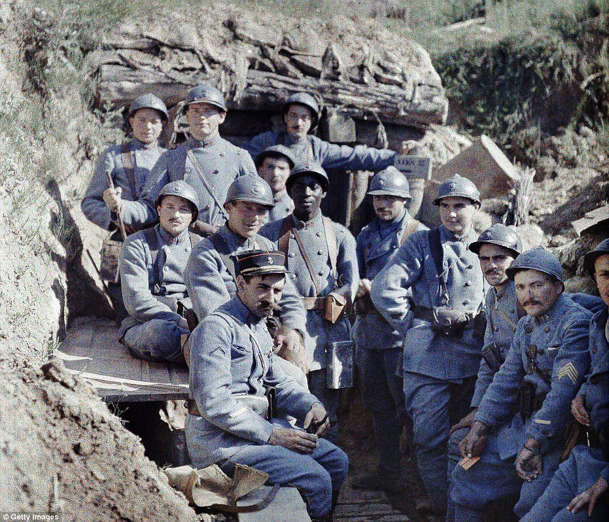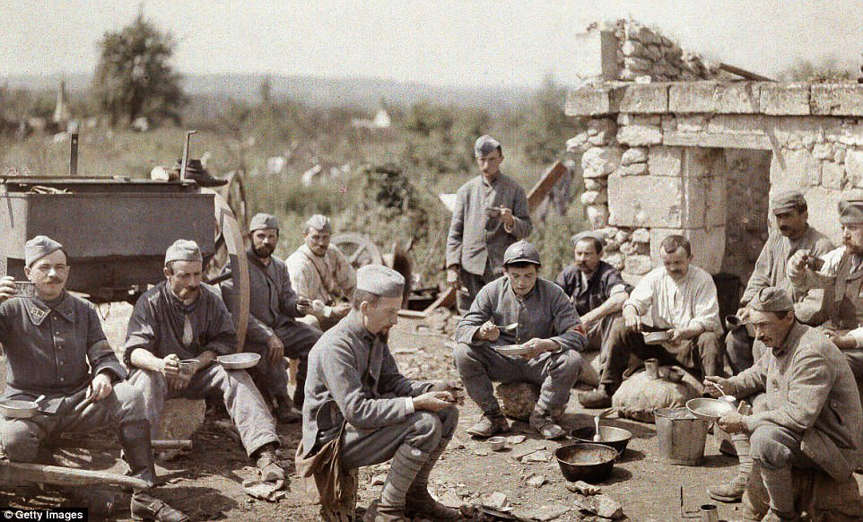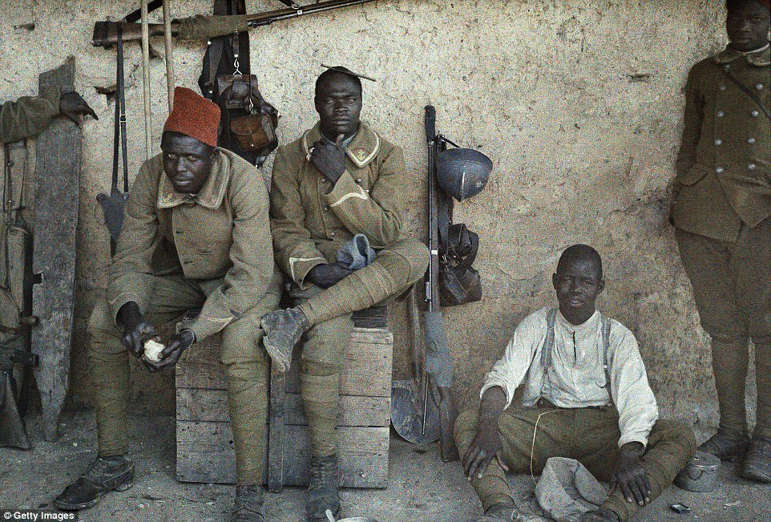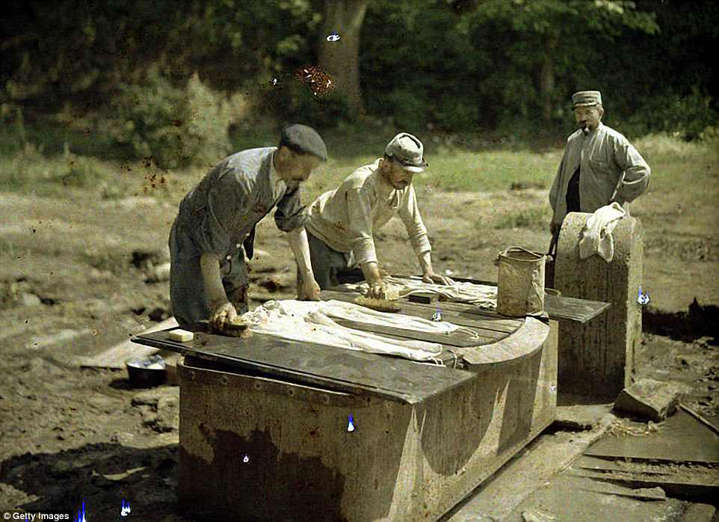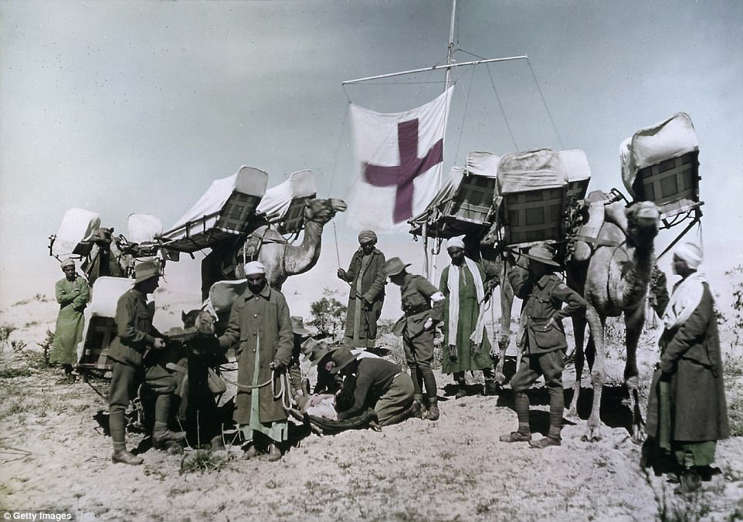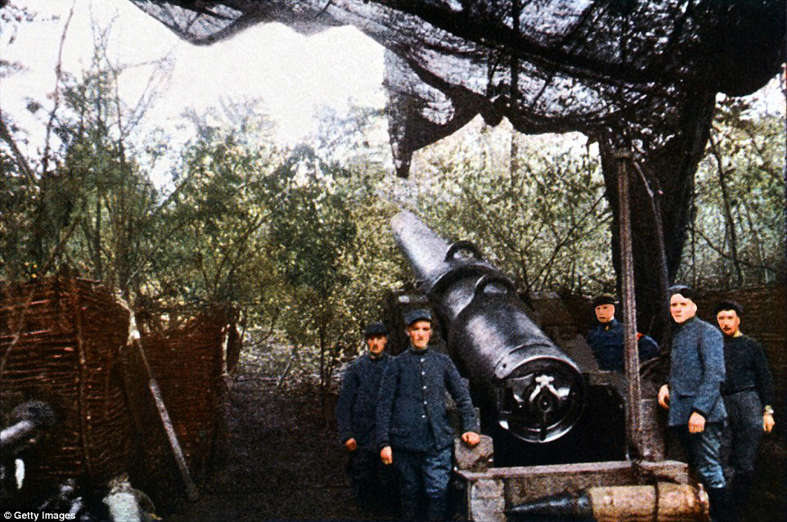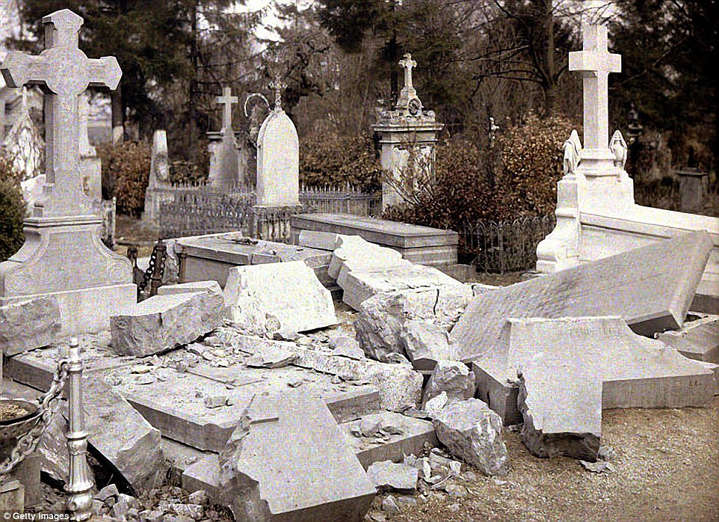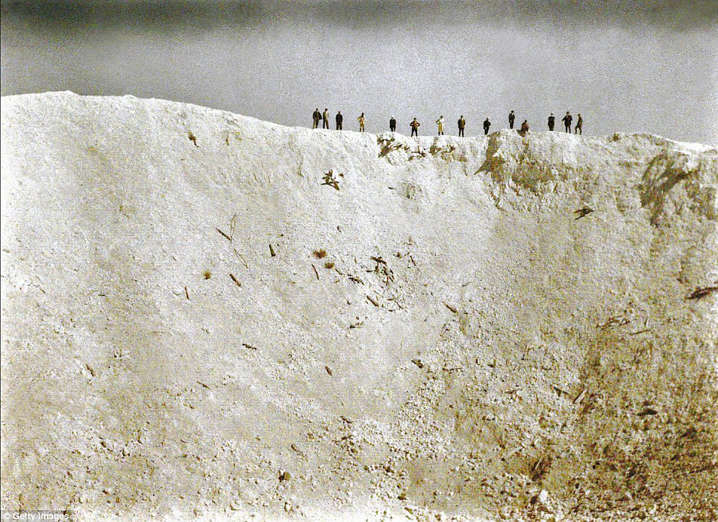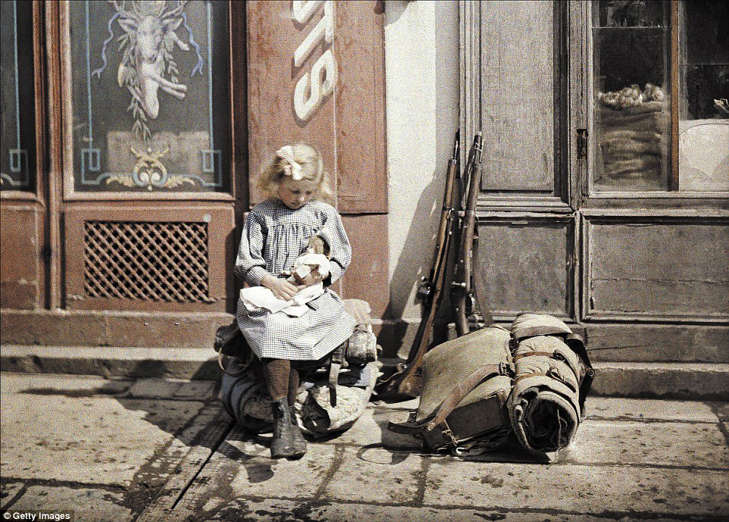
THE GREAT WAR PICTURES THAT ARE NOT COLOURISED: INCREDIBLE PHOTOGRAPHS OF WORLD WAR I TAKEN BY SOME OF THE FIRST COLOUR CAMERAS
At first glance these photos from the First World War appear to be digitally colourised, but in fact these rare images were taken using some of the world's first colour cameras.
The stunning pictures show French soldiers reading newspapers, pausing for lunch in ruined towns and cities and clearing the rubble after devastating German artillery raids.
Some of the weapons and machinery of the war can also be seen in extraordinary detail, including a British Sopwith fighter plane and 75mm guns used by French artillery.
The world's first colour photograph was taken in 1861, but the use of colour film did not become widespread until well after the end of the First World War.
The pictures also reveal the human side of the war, as one soldier is shaved by a barber in a French military encampment and another picture shows a girl playing with her doll in the ruins of Reims.


